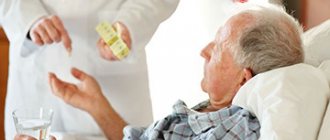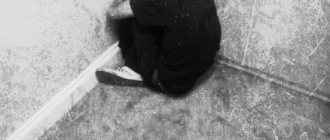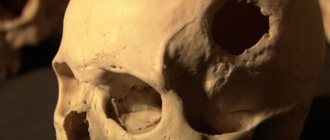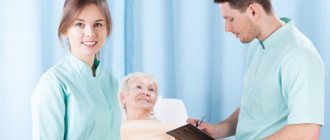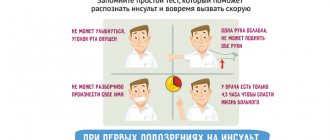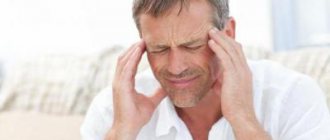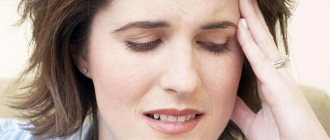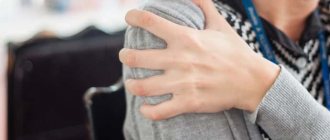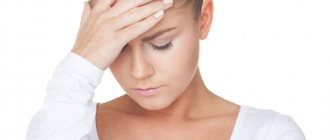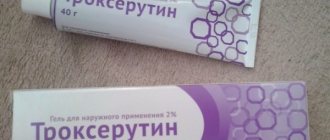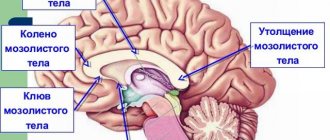How to treat cuts after a stroke
Impaired motor activity is one of the most common phenomena in cerebrovascular accidents.
Paralysis and paresis after a stroke occurs in the opposite part of the body from the one where the deterioration of blood flow occurred.
If there is numbness in the limbs or face in the left half, specialists can preliminarily diagnose a violation of blood flow in the right hemisphere and vice versa.
Causes of paralysis
Immobility occurs as a result of the closure of the lumen of the vessel or its rupture. A blockage occurs when a broken clot disrupts blood flow to areas of the brain or enters an artery. The reasons for the violation of the integrity of the artery can be hypertension, aneurysm or traumatic brain injury.
Paralysis after a stroke can occur in people who suffer from hypertension, high cholesterol, obesity or atherosclerosis. The risk group includes those who suffer from addictions and are exposed to frequent stressful situations.
Paralysis after a stroke: main symptoms
- Weakness or numbness of the limbs on one side of the body.
- Movement coordination disorder, inability to stand or walk straight.
- Cramps in the limbs.
- Fatigue, sleep disorder, depression.
- Lack of speech or incoherent sentences.
With a stroke, depending on the location of the lesion, symptoms may vary. How favorable the treatment outcome will be largely depends on timely medical care provided.
If a stroke is preceded by sluggish signs and the disorder itself does not occur suddenly, then the prognosis can be the best, provided that all the doctor’s recommendations are followed.
Even in the event of loss of consciousness, but returning to reality several hours later, we can talk about the probable restoration of all functions.
If a patient does not regain consciousness for several days after a stroke, prolonged treatment and rehabilitation with complete or partial paralysis are possible. With a sudden stroke, death is likely and the prognosis is the most unfavorable.
Initially, there may be a slight loss of sensation in the limbs on one side of the body. Very often, a stroke begins with small manifestations that patients do not pay due attention to.
If such a condition is preceded by a sharp rise in blood pressure, a severe headache, or inappropriate, uncontrollable behavior, a brain stroke can be confidently diagnosed, the consequences of which can be very different.
Right side paralysis after stroke
Occurs when blood flow in the left hemisphere of the gray matter is disrupted. The symptoms are more expressive and easier to notice:
- inability to repeat a simple phrase, misunderstanding of addressed speech;
- involuntary, reflex movements of paralyzed limbs;
- paresis or paralysis of the facial nerves and limbs with the possibility of complete paralysis;
- inappropriate behavior, sudden mood swings, isolation or depression.
With a stroke of this type, the patient’s chances of a successful recovery are very high. As a rule, the consequences here occur much less frequently and patients recover quickly.
Left side paralysis after stroke
Disorders of blood flow in the right hemisphere of the brain are more severe, widespread, and their consequences are quite severe. With a stroke in this case, the following is observed:
- immobility of the limbs on the left side of the body or paresis of the left side of the face;
- numbness of the left side of the body or significant loss of sensitivity;
- deterioration of the visual organs.
With a stroke of this type, speech impairment practically does not appear. This is precisely the main reason for late diagnosis and the development of adverse and irreversible consequences associated with complete hearing loss and complete paralysis.
Arm paralysis due to stroke
Due to disruption of the passage of nerve impulses, involuntary, uncontrolled contraction of the muscles of the upper extremities can be observed.
Paresis or complete immobility is not a final sentence, and it is quite possible to restore the activity of the hand. Doctors prescribe massage of muscles and joints, which is performed by a specialist.
In the first stages of recovery, it is advisable to change the position of the affected limb more often.
To get more complete information about the consequences of a stroke, to understand how quickly the face and body recover and what needs to be done for effective rehabilitation and relief from paralysis and paresis, contact a stroke clinic in your city
source
Paralysis, cutting and other motor impairments. How does a paralyzed arm recover after a stroke?
Muscle dysfunction during stroke is the result of destruction of motor centers in the cerebral cortex. As a result, paralysis (complete or partial) of the body or limbs may occur. In such cases, the patient is diagnosed with plegia or paresis.
The most common occurrence, which almost none of the stroke patients can avoid, is paresis of one of the limbs. With paresis, there is a partial loss of sensitivity and motor activity.
For example, when several muscles do not work, as a result of which one arm stops bending after a stroke or does not bend at the shoulder, elbow, or wrist part completely, monoparesis is diagnosed; if the work of both arms (or legs) is impaired, we are talking about paraparesis.
Accordingly, if all four limbs partially do not work, we are dealing with tetraparesis. If the loss of sensitivity and movement is complete, paralysis or mono-, para- and tetraplegia, and so on, are diagnosed.
Source: https://tepcontrol.ru/kak-lechit-porezy-posle-insulta/
Ischemic apoplexy paralysis
Ischemic stroke: unilateral paralysis
Treatment of unilateral paralysis of the face or body after an ischemic stroke using acupuncture is a unique method often used by specialists from the Chinese Academy of Traditional Medicine.
From 1992 to 1996 Professors Wang Dai and Feng Chunxian studied the effects of acupuncture on people suffering from paralysis after a stroke. The duration of the illness of 100 volunteer patients, aged 46 to 79 years, who suffered an ischemic stroke, ranged from 15 days to 3 months. 86 patients had cerebral thrombosis, 4 had cerebral embolism, and 10 had lacunar cerebral infarction. In 87 cases the stroke was the first, in 13 cases it was repeated. During the initial examination, the condition of 33 patients was stable, 67 - quite serious. Forty-six patients had a history of hypertension, 24 had a history of coronary heart failure, and 46 had elevated lipid levels.
The patients were divided into 3 groups. The first group consisted of 30 people, treatment was carried out using traditional methods of Western medicine. In the second group there were also 30 people, complex treatment was used there: Western medicine and acupuncture. Finally, the final group included 40 people who received acupuncture exclusively.
The results of the study showed that acupuncture has an obvious therapeutic effect in treating the consequences of ischemic stroke and unilateral paralysis of the face and body, and also improves the general health of patients in general.
Specialists at the Kim Dao Chinese Medicine Clinic have extensive experience in treating the consequences of ischemic stroke. We invite you to your first appointment, during which our doctors will conduct a free pulse diagnosis and offer you or your loved ones an individual treatment regimen for unilateral paralysis and other consequences of ischemic stroke.
You can make an appointment here.
Elkar (levocarnitine) for ischemic stroke, MD, prof. P. R. Kamchatnov
Unilateral paresis after stroke
The most common motor impairment after stroke is hemiparesis, which is a one-sided (“Hemi”) weakness (“paresis”).
Hemiparesis affects approximately 80 percent of stroke survivors, who develop weakness or inability to move one side of the body. Weakness can affect the arms, hands, legs and facial muscles.
Those who have had a stroke may have problems with activities of daily living, such as eating, dressing, using the bathroom, and holding objects.
Symptoms
Hemiparesis in the arms, hands, face, chest, legs, or feet alone can cause:
- Loss of balance
- Difficulty walking
- Impaired ability to hold objects
- Decreased accuracy of movements
- Muscle fatigue
- Loss of coordination
Left hemisphere of the brain
Injury or stroke to the left side of the brain, which controls language and the ability to speak, can lead to right-sided hemiparesis.
Because the left side of the brain is involved in controlling speech and language, a person with right-sided hemiparesis may have problems communicating (using facial muscles and speaking) and understanding what is said (aphasia).
Right hemisphere of the brain
Left-sided hemiparesis is the result of injury or stroke in the right side of the brain, which controls cognition, nonverbal communication and determines the type of behavior.
People who have had a stroke affecting the right side of the brain may also have problems with memory and attention, and may be excessively talkative.
Left-sided hemiparesis may also suppress sensory and spatial skills.
Cerebellum
Damage to the lower part of the brain, the cerebellum, can affect the body's ability to coordinate movements. This is called ataxia, which can lead to problems with posture, coordination and balance.
Pure motor hemiparesis
This is the most common type of unilateral weakness. Stroke survivors with pure motor hemiparesis have weakness of the face, arms, and/or legs.
Brain stem
The brain stem controls the swallowing process. Paralysis of the laryngeal muscles can lead to dysphagia.
Hemiparesis with ataxic syndrome
Weakness or awkwardness on one side of the body causes ataxic syndrome in hemiparesis.
Ataxia causes individual over- or under-range of purposeful movements (dysmetria), as well as delayed onset, difficulty maintaining strength and rhythm (dysdiadochokinesia), tremors, and difficulty coordinating a muscle group. It usually affects the legs more than the arms and can occur over a period of hours or days.
Treatment
Strength and movement can be increased or restored through immediate rehabilitation. Working with a primary care physician, physical therapist, and/or occupational therapist has been shown to have a beneficial effect on mobility.
- An attending physician specializing in rehabilitation medicine coordinates rehabilitation.
- A physical therapist treats stroke survivors by recommending exercises and stretches to improve strength, endurance, range of motion, and balance skills.
- An occupational therapist can help a stroke survivor regain the skills needed to perform daily activities. In addition to helping people who have had a stroke improve and regain skills and function, these health care providers can help with the adaptation and use of assistive devices.
Treatment methods
A variety of procedures are used to help improve use and mobility in affected arms and legs. These include the following:
- Changing restrictions is induced by treatment - intensive exercises for the limbs. Treatment involves restricting the use of less affected parts of the body, which forces the patient to use the weakened parts of the body. While this behavioral treatment is being practiced regularly, it can improve the nerve functions in the central nervous system. Treatment is administered at varying intensities and durations depending on the functioning of the person's limbs.
- Electrical stimulation is used in the treatment of hemiparesis to increase sensory awareness, strengthen a weakened body part (such as an arm, leg, hand or foot) and increase their range of motion. This procedure involves placing small electrically conductive patches on weakened muscles in the affected part of the body. The electrical charge helps the contracted muscles act, causing them to move. Many of these electrical stimulation devices are quite safe and can be used at home.
- Cortical stimulation is a type of electrical stimulation, but instead of electrically stimulating the arm or leg directly, the electrodes stimulate a part of the brain called the cortex. A tiny electrode is placed for a long time on a tough membrane that covers the brain. An electrode transmits an electrical current to the brain while stroke survivors do rehabilitation exercises. This treatment is a safe way to restore mobility.
- Movement visualization is the process of imagining the movement of the affected body part. This mental practice activates areas of the brain and muscles as if the patient were actually performing the movements. A network of nerves in the brain is involved in visualization and physical movement, making this activity effective when combined with other treatments.
Management of rehabilitation after stroke
In addition to rehabilitation treatment, home exercises and supplements can help improve mobility.
Exercises
Regular repetition of exercises and constant mobility will help manage the growth, flexibility and recovery of the nervous system.
Patients can learn specific exercises that can be done at home, allowing them to continue recovery after hospital treatment.
Consistency and concentration are key to restoring precision, range of motion, and strength to stroke-damaged limbs. Always consult your doctor before starting these exercises.
Aids
Modifications for home items, a list of which can be found below, can improve the safety of people who have suffered a stroke at home.
- Handrails
- Ramps
- Raised toilet seats
- Benches for the bathroom
- Hand shower
- Plastic adhesive strips for the bottom of the bathtub
- Long-handled brushes, washcloth mitts with pockets for soap
- Electric toothbrushes and razors
Braces, canes, walkers, and wheelchairs can help increase strength and precision of movement.
https://www.youtube.com/watch?v=bdSvWkb_3jI
An ankle brace starts below the knee to enclose and control the ankle and foot. Some types of these braces or changes made to them may also affect knee movement. Other variations and adjustments can be made to the braces to suit individual needs.
A physical therapist can recommend appropriate devices. Training in safety and proper use of orthotics is important.
Lifestyle change
Making simple lifestyle changes can help prevent mistakes and help you regain your health.
Examples of some life changes are given below:
- Be active
- Strengthen your leg muscles and improve your balance with exercises
- Wear flat shoes with wide toes
- Eat calcium-rich foods/take calcium supplements
- Use prescribed assistive devices rather than leaning on furniture for support while walking
- Take precautions when taking medications that cause drowsiness
- Focus on walking
Source: https://life-after.ru/blog/2013-07-27-146
Prevention of relapse
Preventive measures include the following:
- timely treatment of diseases, especially infectious ones;
- maintaining a healthy lifestyle, giving up alcohol and smoking;
- immediate consultation with doctors in case of illness or other problems;
- blood pressure control.
Recurrent paralysis is a disease that requires increased attention from the patient. To prevent it, it is important not to stop physical exercise, transforming it into morning exercises.
In addition, the prevention of recurrence of paralysis will be the prevention of the diseases that provoked it, in this case, a recurrence of stroke. To do this you need:
- follow a diet, giving up smoked meats, pickled vegetables, reducing the amount of butter, fatty meat and eggs consumed;
- reduce caloric intake;
- physical exercise, such as swimming, jogging, cycling;
- timely use of medications, especially with high blood pressure.
Methods of recovery for paralysis of the right and left sides after a stroke
The worst consequence of a stroke is paralysis. And it seems that the patient’s life will no longer be the same. But even such a terrible disease can be fought. The main thing is not to give up and start rehabilitation on time.
The article talks about why movement disorders occur after a stroke and what treatment methods can be used to eliminate them. Sets of exercises are also given to restore paralyzed parts of the body.
Causes of motor dysfunction
A stroke occurs when there is an acute disruption of blood circulation in the brain. This prevents the conduction of nerve impulses from the motor area of the cerebral cortex to the muscles. Such consequences interfere with performing full motor actions.
Consequences
- Plegia.
- Paresis.
- Speech impairment.
- Impaired ability to understand speech.
- Impaired movement coordination.
- Vision pathologies.
- Coma.
- Epilepsy.
Is it possible to recover?
Doctors involved in the recovery of patients after a stroke cannot always give a clear prognosis. The fact is that much depends on the desires and efforts of the patient himself and the support of loved ones.
In addition, the following factors are also important:
- Patient's age.
- Severity of stroke.
- How quickly the person was hospitalized.
- Proper organization of rehabilitation.
The sooner the patient’s rehabilitation process begins, the higher the chance of effectively restoring impaired body functions.
If the stroke has minor consequences, you can start activating patients from 5-7 days. In the case of a large heart attack or cerebral hemorrhage, this time increases to 2-3 weeks.
Basic methods of patient recovery:
- Exercise therapy.
- Massage.
- Kinesiotherapy.
- Passive gymnastics.
- Physiotherapy.
- Occupational therapy.
- Drug treatment.
Restoration of motor abilities occurs within six months. During this same period, the recovery process slows down, but does not stop completely. Therefore, it is necessary to continue all prescribed procedures with the same intensity.
We talked in more detail about the stages and timing of recovery after a stroke here.
If the right side is paralyzed
The main difference between right-sided paralysis is that it is provoked by a stroke of the left hemisphere of the brain. The consequences of such a stroke are more severe than with damage to the right hemisphere, and impaired functions are more difficult to restore.
These exercises are best used for right-sided paralysis:
- For eyes. Perform eye movements alternately up and down. Repeat 6-8 times in each direction. Next, make eye movements alternately left and right, 6-8 repetitions. Now perform circular movements, 5 times in each direction.
- For the neck. Slowly turn your head to the right and then to the left. Try to do all movements while exhaling. At the same time, the eyes look at one point in front of them and do not move. Make 5 turns in each direction.
- For hands. Bend and straighten your fingers for 10 repetitions. Then place your arm along your body and slowly bend and straighten it at the elbow. Repeat 10 times.
- For the shoulders. Grab the bed rails with your hand and try to pull yourself up as much as possible. Repeat no more than 5 times.
- For legs. Bend and straighten your knee in a sliding motion without lifting your leg off the bed. Repeat 5-8 times.
All exercises must be performed slowly, avoiding excessive fatigue of the patient. If some movements are not yet possible, they can be performed with an assistant.
After paralysis of the left side
Paralysis on the left side is easier, so you can perform the same exercises as described for right-side paralysis, with the only exception: the patient can do 3-4 more repetitions.
With left-sided paralysis, rehabilitation is easier , and the first results appear much earlier.
Exercises for the torso
When the patient is strong enough to sit down without assistance, you can move on to exercises for the torso:
- Lying on the bed, clasp it with both hands on both sides. Now tilt your head back, and, straining your entire torso, try to bend at the lower back. Repeat 3-6 times.
- Lying on the bed, bend your knees, stretch your arms forward. In two counts, pull your knees as close to your chest as possible and try to wrap your arms around them. Hold the position for a few seconds. Now lower your legs to the starting position. Repeat 6-8 times.
- Sit on the edge of the bed, stretch your legs, place your arms behind you and tilt your head back. Try to squeeze your shoulder blades together and hold in this position for a couple of seconds. After a short rest, repeat the movement 4-5 more times.
How to restore your legs?
When the patient begins to stand up on his own, you can add more complex exercises for the legs. The lesson should be supervised by an assistant, who will always support if necessary.
- Starting position (ip.) – right hand on a support, left hand on the belt, feet shoulder-width apart. Now smoothly lift your left leg up, and just as smoothly lower it down. Perform the same movement with your leg backwards. Now grab the support with your left hand and repeat the exercise with your right leg. Each leg must make at least 3 swings both backward and forward.
- I.p. – hands on the belt, feet shoulder-width apart. Do squats, moving your pelvis back a little, while your arms stretch forward. The heels do not come off the floor. Do 4-6 squats.
Remember to give yourself a rest after each exercise.
At the first stage of rehabilitation, before starting a gymnastic complex, you need to carry out a therapeutic massage. It should only be done by a massage therapist with a medical education.
Performing the above exercises will help the patient quickly return to self-care, avoid worsening the consequences of a stroke and improve overall health.
Sometimes, for the purpose of rehabilitation after a stroke, a set of exercises should be combined with exercise equipment. You can find out more about this here.
Medications
Drug treatment for paralysis following a stroke must be prescribed by a doctor. Such drugs are divided into 4 groups: muscle relaxants, antidepressants, anticonvulsants and antiplatelet agents.
Muscle relaxants
Usually, by the third month after a stroke, the patient develops muscle hypertonicity. This is one of the most serious consequences of cerebrovascular accident. In this case, muscle relaxants are prescribed, which reduce the tone of skeletal muscles.
The best drugs from the group of muscle relaxants:
- Mydocalm (price in Moscow from 300, in St. Petersburg from 150 rubles).
- Baklosan (price in Moscow from 273, in St. Petersburg from 270 rubles).
Antidepressants
During the rehabilitation period, up to 80% of patients suffer from depression. In this case, the doctor prescribes antidepressants.
The best drugs from the group of antidepressants:
- Maprotiline (price in Moscow from 750, in St. Petersburg from 1000 rubles).
- Paxil (price in Moscow from 650, in St. Petersburg from 660 rubles).
Anticonvulsants
This group of drugs is designed to reduce seizure symptoms. When taking them, you need to carefully monitor the patient's condition, since anticonvulsants can cause various side effects.
The best drugs from the group of anticonvulsants:
- Carbamazepine (price in Moscow from 60, in St. Petersburg from 57 rubles).
- Clonazepam (price in Moscow from 97, in St. Petersburg from 156 rubles).
Antiplatelet agents
These drugs are prescribed to those patients whose blood has become more viscous after a stroke. Antiplatelet agents prevent blood clots.
The best drugs from the group of antiplatelet agents:
- Pentoxifylline (price in Moscow from 150, in St. Petersburg from 145 rubles).
- Clopidogrel (price in Moscow from 148, in St. Petersburg from 149 rubles).
Remember that with such a serious illness as paralysis after a stroke, you cannot self-medicate. Therefore, before purchasing any drug, you should consult your doctor.
Physiotherapy
This type of rehabilitation is prescribed based on the patient’s condition, as well as possible negative consequences from the competitive procedure.
Let's look at the most common types of physical therapy and the effects they provide.
Magnetotherapy
The most painful, but also the most effective method. After magnetic therapy, all processes in the brain improve, and improvements are also observed in the endocrine and nervous systems.
Dorsanval
Prescribed to patients with paralyzed limbs and poor circulation. After a whole course of procedures, the patient notices significant improvements in his condition.
Electrical muscle stimulation
Thanks to the influence of electrical impulses, it is possible to eliminate congestion in the patient’s body and prevent the deterioration of his condition.
When choosing a certain type of rehabilitation, we must not forget about the most important thing: the help of loved ones influences recovery better than any medicine. Therefore, whatever you choose, remember that psychological support from relatives can put even the most hopeless patient back on his feet .
You can learn even more information about recovery methods for paralysis from this video:
, please select a piece of text and press Ctrl+Enter.
If you want to consult with the site’s specialists or ask your question, you can do it completely free of charge
Source: https://inBrain.top/bolezni/insult/reabilitatsiya/kak-vosstanovit-dvizheniya.html
Paresis - symptoms, treatment, causes of the disease, first signs
Paresis is a decrease in muscle strength.
This condition is a consequence of various diseases and does not depend on belonging to a particular gender, so we can say that it occurs with equal frequency among both women and men.
The age range is also different and depends on the cause of paresis.
A decrease in muscle strength leads to a decrease in working capacity and the inability to cope independently in everyday life, therefore the development of paresis is a serious social problem and requires timely provision of medical care.
Based on the area of the body in which paresis occurs, it is customary to distinguish the following types:
- monoparesis – symptoms appear on only one arm or leg;
- paraparesis – signs of paresis are present on both parts of the body, which are located symmetrically in relation to each other. With paresis of the arms it is called upper, with paresis of the legs - lower;
- hemiparesis – paresis affects one half of the body;
- tetraparesis - all limbs are affected.
Depending on the level of damage to the nervous system, there are two types of paresis:
- Central (damage is localized at the level of the brain and spinal cord);
- Peripheral (peripheral nerves are damaged).
The main causes of central paresis:
- stroke;
- traumatic brain injuries;
- spinal cord injuries;
- tumors of the brain and spinal cord;
- intervertebral hernia;
- multiple sclerosis;
- amyotrophic lateral sclerosis (ALS);
- cerebral palsy.
Among the causes of peripheral paresis are the following:
- radiculitis;
- demyelinating diseases of the nervous system;
- peripheral nerve injuries;
- compression of nerves, so-called “tunnel syndromes”;
- nerve damage due to connective tissue diseases and vasculitis;
- various poisonings, including alcohol.
Diagnostics
likar.info
Diagnosis begins with interviewing the patient. The localization of the onset of weakness and possible previous causes contributing to the appearance of paresis are clarified.
It is important to find out whether there are people in the family with similar symptoms, and also to clarify the place of work, namely the presence of occupational hazards.
After the conversation, the doctor proceeds to a neurological examination, during which muscle strength is assessed on a 5-point scale:
- 5 points – no paresis, muscle strength is completely preserved;
- 4 points – mild paresis;
- 3 points – moderate paresis;
- 2 points – severe paresis;
- 1 point – pronounced paresis;
- 0 points – paralysis.
A neurological examination is aimed at differential diagnosis between central and peripheral paresis. To do this, the volume of active and passive movements, reflexes, muscle tone are checked, atrophies, fascicular and fibrillary twitches are identified.
After a general examination, laboratory and instrumental research methods are prescribed. To detect signs of poisoning, a toxicological blood test is prescribed. A general blood test can reveal signs of inflammation, and an increase in the level of leukocytes and ESR will be observed.
ENMG (electroneuromyography) has good information content. This research method allows you to evaluate the electrical activity of muscles, the speed of nerve impulses along the motor and sensory fibers of peripheral nerves, and the number of functioning motor units.
EEG (electroencephalography) allows you to evaluate the electrical activity of different parts of the brain. This is important, since this indicator changes with various diseases of the central nervous system.
CT and MRI of the spinal cord and brain help in visualizing various pathological conditions, such as tumors, hemorrhages and the like.
MRA (magnetic resonance angiography), as the most accurate and safe method for studying cerebral vessels, allows not only to see the blood vessels of the brain and study their anatomical features, but also makes it possible to identify functional defects at a fairly early stage.
Medicines
plastichno.com
In the treatment of paresis, neuroprotectors are used - drugs that help protect nerve fibers. For this purpose, B vitamins (B1, B6, B12) are prescribed, which are either used individually or in combination. An example of such a combination drug is Milgamma.
This drug is able to restore metabolism inside cells, which helps slow down the process of destruction of myelin (the sheath of the nerve fiber), and also affects myelin regeneration. It is recommended to prescribe in 2 stages.
At the first stage, an injection form of the drug is used, at the second, a transition to tablets is made.
Vinpocetine is used to improve cerebral circulation. Its effect is achieved by dilating cerebral vessels. In addition, the drug has antiplatelet and antihypoxic effects. Some experts consider this drug to be outdated and ineffective, but, nevertheless, it is still used to this day.
For neuroinfection, antibiotics are used if there is a bacterial etiology of the disease.
The choice of antibacterial drug is made based on an analysis of the sensitivity of the microorganism that causes the infection to certain groups of antibiotics.
Often, treatment begins before the test results are obtained, and broad-spectrum antibiotics are used. For example, cephalosporins may be prescribed.
It is important to understand that a phenomenon such as paresis can be a manifestation of various diseases, therefore the treatment is carried out by a qualified doctor who is able to select the necessary treatment taking into account each individual case.
Folk remedies
fitohome.ru
Paresis does not mean a complete loss of motor activity, so it is important to engage in therapeutic exercises and physical education for a long time, gradually increasing the load. The course of therapeutic exercises is selected by the attending physician and carried out in a medical institution.
This is necessary so that each time the patient is under the supervision of a specially trained person who can assess the correctness of the exercise technique, as well as monitor the dynamics of treatment. In addition, it is important to exercise yourself and at home in order to improve and speed up the expected effect of treatment.
A gradual increase in load should subsequently be complemented by movements with resistance. This will help in increasing muscle size and strength.
Therapeutic exercises should be combined with massage sessions, which improves tissue nutrition, promotes the formation of nerve impulses, and also prevents the development of muscle atrophy. You can sign up for a massage with a specialist, but given that this therapy is long-term, it is possible to teach massage techniques to relatives so that they can constantly practice at home.
For peripheral paresis, physiotherapeutic procedures have a good effect. They help improve blood circulation, stimulate metabolic processes and trophism, and help restore lost function. In this case, physiotherapy is used:
- diadynamic currents;
- electrophoresis;
- magnetotherapy.
Currently, acupuncture (acupuncture) is gaining momentum. This is one of the methods of alternative medicine, which still has a lot of critical views from various specialists, however, despite this, the demand for this procedure is progressively growing.
The information is for reference only and is not a guide to action. Do not self-medicate. At the first symptoms of the disease, consult a doctor.

